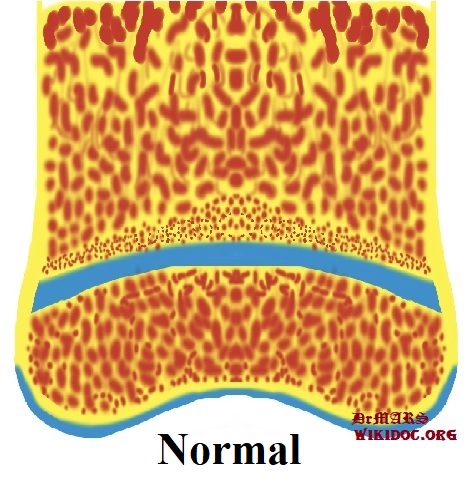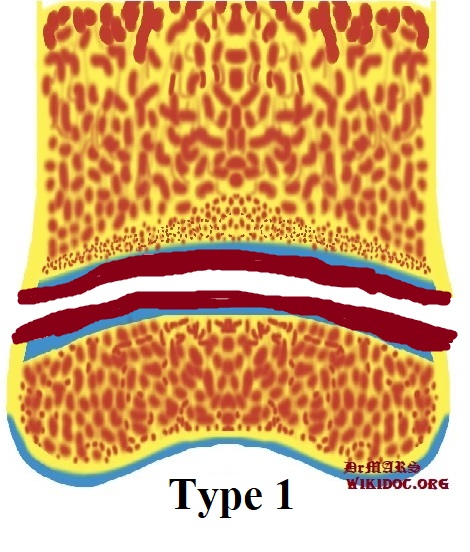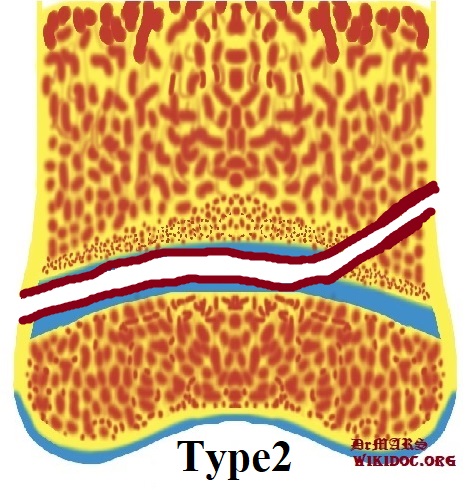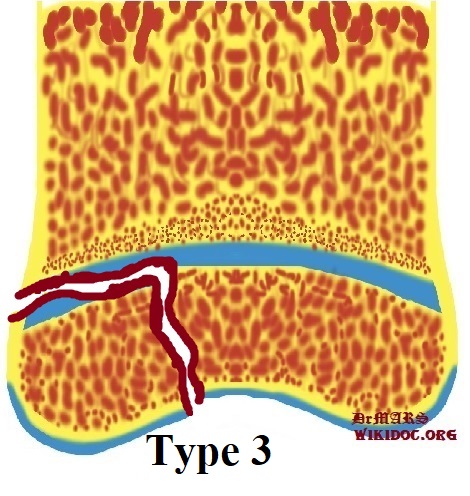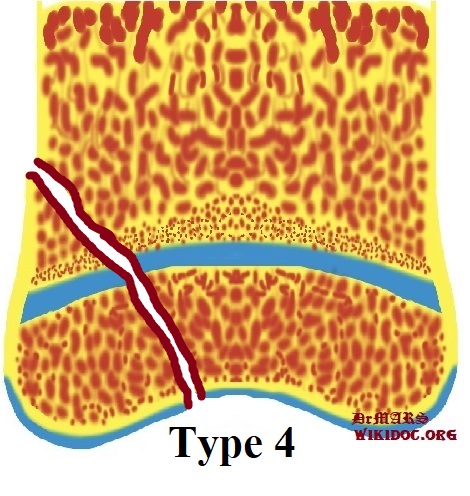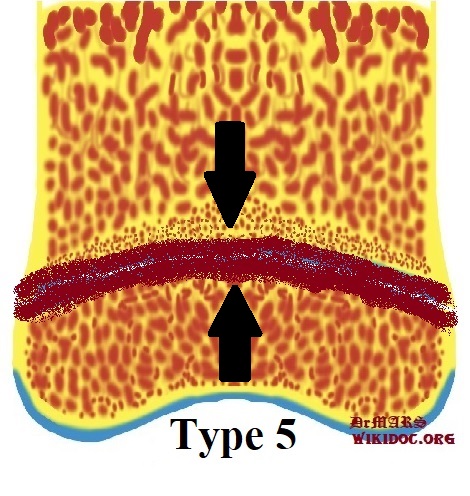Salter-Harris classification: Difference between revisions
| Line 66: | Line 66: | ||
* poorer prognosis as the proliferative and reserve zones are interrupted | * poorer prognosis as the proliferative and reserve zones are interrupted | ||
|[[File:Type 3 Salter-Harris classification.jpg|alt=courtesy of DrMars, <https://www.wikidoc.org>|thumb|'''''Type 3 Salter-Harris classification''''']] | |[[File:Type 3 Salter-Harris classification.jpg|alt=courtesy of DrMars, <https://www.wikidoc.org>|thumb|'''''Type 3 Salter-Harris classification''''']] | ||
| | |[[File:Salter-Harris type III injury of ankle.jpeg|thumb|'''Salter-Harris type III injury of ankle''']] | ||
|- | |- | ||
|Type IV | |Type IV | ||
Revision as of 21:57, 18 April 2019
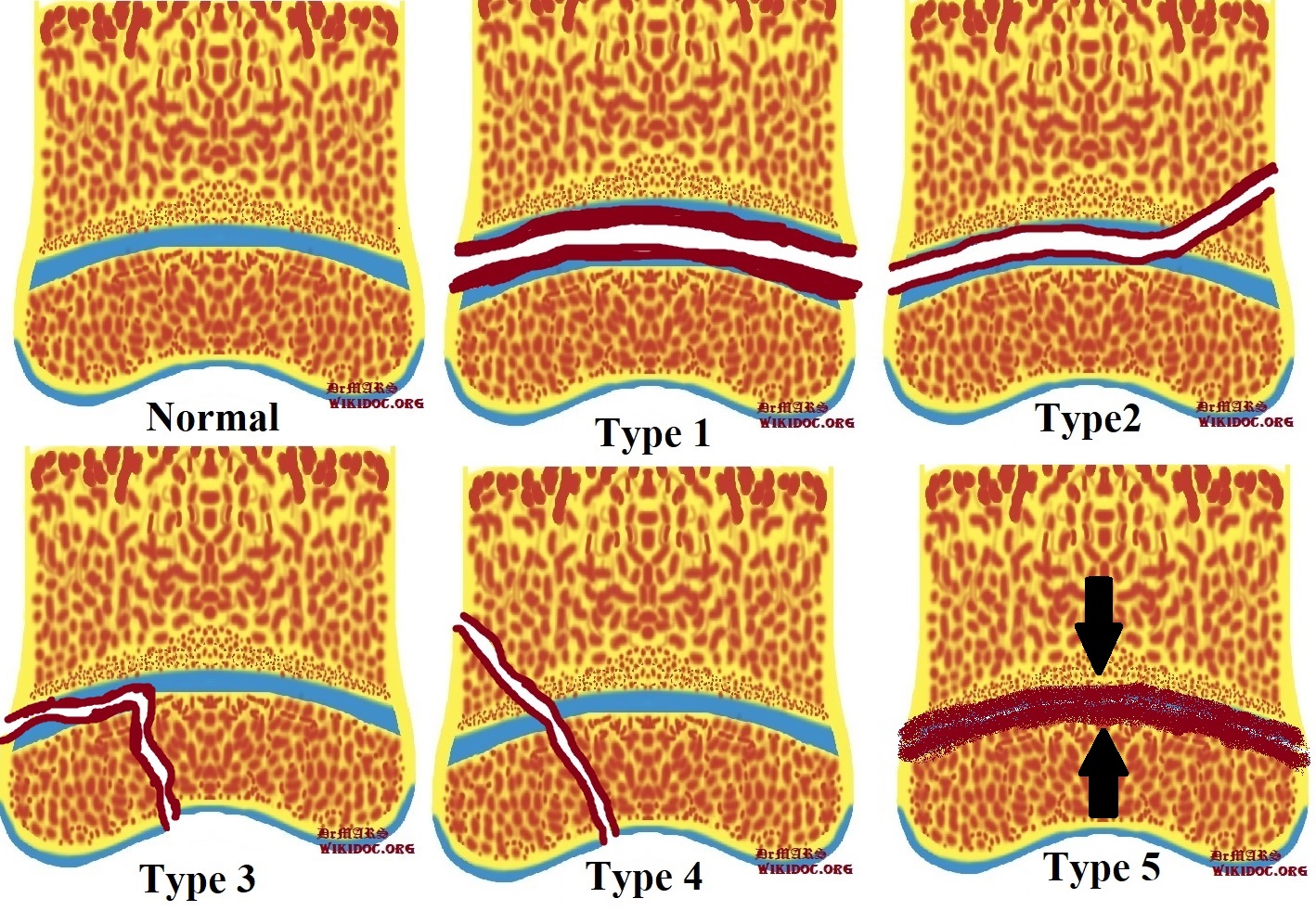
Editor-In-Chief: C. Michael Gibson, M.S., M.D. [1]; Associate Editor(s)-in-Chief: Mohammadmain Rezazadehsaatlou[2].
Overview
Injuries leading to the bone fracture affecting the epiphyseal plate, or physis, are important and common in orthopedic medicine and the cause diagnostic and treatment challenges for orthopaedic surgeons. The related incidence rate of these fracture among pedicatric population is 15-20%.
Historical Perspective
In 1863, Foucher JT was the first person who described the injuries affecting the epiphyseal plate.
In 1895, Poland J, classified the injuries affecting the epiphyseal plat into the four types.
In 1936 , Aitken AP, defined the specific differences of different types of physes based on their differences in: structure, location, weightbearing status, and susceptibility to injury.
In 1963, two Canadian orthopaedic surgeons, Robert B. Salter (1924–2010) and W. Robert Harris (1922–2005), introduced a physeal fracture classification system according to the anatomy, fracture pattern, and prognosis of bone fracture.
Then, various researchers and physicians tried to expanded the original work of Salter and Harris in order to make it to be to be more comprehensive:
In 1968, Rang M, added a different sixth type of physeal injuries describing the caused damage to the perichondral ring due to the direct open injuries to the affected bone.
In 1981, Ogden JA, described nine types of injuries such as injuries affecting the developing bone’s other growth mechanisms.
Salter-Harris classification
See also
